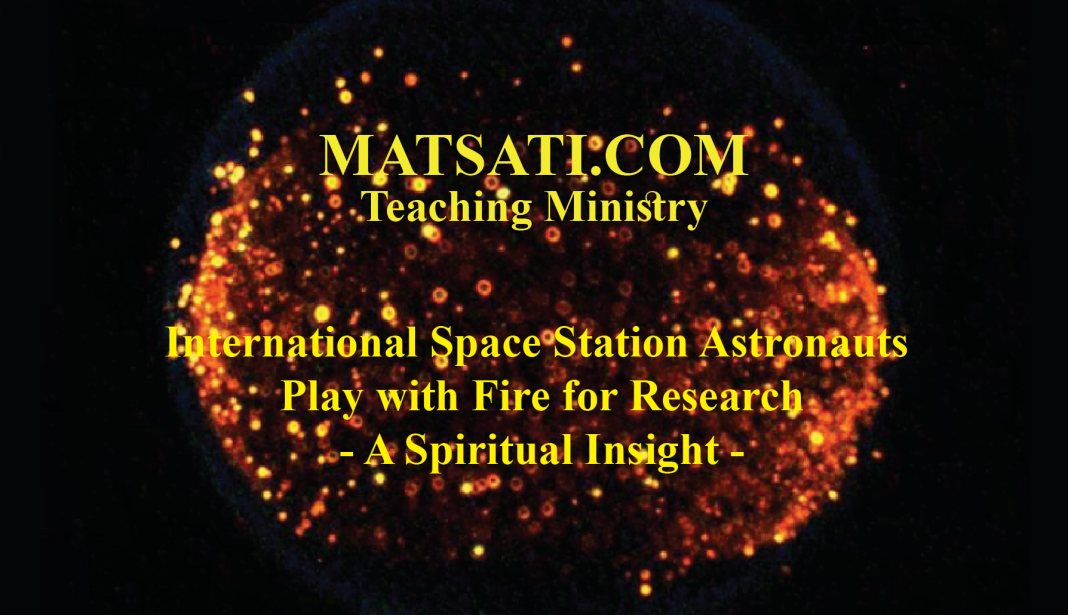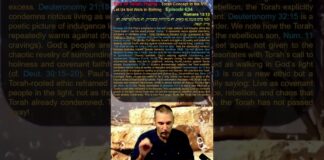Astronauts are studying the way fire burns in microgravity environments such as on the International Space Station (ISS). [1-3] The reason being, fire can be very dangerous in confined spaces such as in a space capsule that is located 250 miles above the Earth, with a limited air supply. The experiments being conducted are called “Confined Combustion” and are performing the research in order to help improve safety on the ISS and for future missions in space and beyond. This research is designed to increase our knowledge of how flames behave in microgravity environments in order to improve our ability for materials selection and fire safety strategies. When studying the behavior of flames in space, fluid dynamics plays a very important role due to gravity. On Earth, gravity pulls colder denser air down to the base of the flame displacing hot air which rises. Gravity drives the process of fluid mixing, and causes fresh oxygen to feed the fire and the upward flow of hot air gives the flame its characteristic teardrop shape that we all know here on Earth. In the zero gravity environment however, flames can be spherical or may be elongated due to external flows of air. Removing the effects of gravity eliminates natural convection, meaning that the hot air is not rising (going up) because there is no “upward” direction.
References
- Endo, M., T’ien, J.S., Ferkul, P.V. et al., “Flame Growth Around a Spherical Solid Fuel in Low Speed Forced Flow in Microgravity,” Fire Technol (2019). https://doi.org/10.1007/s10694-019-00848-2
- Ivan Ardashevich Bolodyan, Anatoliy Sergeevich Melikhov, Leonid Timofeevich Tanklevskiy, Ivan VyacheslavovichIstomin, “Research of combustion process of construction polymeric materials in zero-gravity,” Acta Astronautica, Volume 163, Part A, October 2019, Pages 6-17, https://doi.org/10.1016/j.actaastro.2019.01.044
- Chengyao Li, Ya-Ting T. Liao, James S.T’ien, David L.Urban, Paul Ferkul, Sandra Olson, Gary A. Ruff, John Easton, “Transient flame growth and spread processes over a large solid fabric in concurrent low-speed flows in microgravity – Model versus experiment,” Proceedings of the Combustion Institute, Volume 37, Issue 3, 2019, Pages 4163-4171, https://doi.org/10.1016/j.proci.2018.05.168
There are quite a few scientific publications reporting on flame growth, combustion, and flame dynamics in zero and microgravity environments, from experimental to simulations. These experiments tested different fuels, for example, cotton, fibreglass, and clear acrylic plastic sheets were some materials tested. Some of the test parameters include different air flows, sizes of box the flame was experiment was run, different fuels, and burn times to study combustion rates. The fires were lit inside of an enclosed environment (box in a box scenario) to ensure the safety of the crew. Some of the interesting findings were that some materials would be more flammable on the moon as compared to the earth due to the lower buoyancy. This is because for some materials, the convection flow is slowed down on the moon. On the Earth, the convection flow may be so fast it causes the flame to go out. However, on the moon, the flow could hit a sweet spot where the flow is just fast enough to draw in oxygen, but not so fast to blow out the flame. These experiments were designed to help design better models to simulate different materials and how they behave in low gravity environments. Based upon these experiments, it is believed that fires on the moon may be more dangerous than on Earth. These experiments also provide new insights into basic science in combustion, and help to learn more about soot formation and how gas radiates from flames, etc.
The Spiritual Insights that we receive from this type of research leads to the question of how fire is used both symbolically and mystically throughout the Scriptures. When we open up the Hebrew Bible (Masoretic Text) the first word in the Bible that we read is the word bereshit (בראשית). Let’s look at this word a little closer.
בראשית
The word bereshit (בראשית) as we can see based upon the highlighting of the central two letters, notice two Hebrew words appear. The word for “covenant” brit (ברית) constructed by the first and last two letters, and the inner two letters to form the word “fire” esh (אש). The word Bereshit therefore may be deconstructed to form two words “Covenant of Fire.” This analysis suggests the act of creation itself was by a Covenant of Fire! This is a fantastic observation when we asking the question of what was the first thing God did in the creation process? The first thing He did was to create light. Note how this was not the light that shines today, from the sun, moon, and stars. This was the divine light of righteousness, holiness, and truth! This is the first of God’s handiwork, His first revelation of Himself came out of the creation, out of this Covenant of Fire. The Divine light of the covenant illuminated the three dimensions of space and time. This reveals to us the nature of reality is founded upon the source of this Covenant of Fire, light, love, righteousness, holiness, and truth. The God of all creation whose power was manifested in the light of righteousness, began His Torah (Instructions) to us with the letter Bet (ב) in this word Bereshit (בראשית). Studying the etymology of the word Bereshit (בראשית) we see how this word is derived from the root word Rosh (ראש) which is translated to mean “head” or “chief.” Let’s look at this word a little closer too.
בראשית
Notice how this word Rosh (ראש) for “head” or “chief” is surrounded by the letters for the word Beyit (בית) meaning “house.” This speaks to “the head of the house of creation” from this analysis of the first Word in the Torah, Bereshit (בראשית). Performing a survey of the Scriptures on fire, we see how God revealed Himself to Moshe on the mountain of Sinai as a Burning Bush (Shemot / Exodus 3:2-4). The Fire of God engulfed the mountain of Sinai (Devarim / Deuteronomy 5:5) and the Torah states that the pillar of a cloud was during the day, and was a pillar of fire at night to illuminate the way for Israel during the night while they traveled in the wilderness (Shemot / Exodus 13:21-22, 14:24). The Lord God Almighty also describes Himself as a consuming fire (Esh Okhlah, אֵשׁ אֹכְלָה) in Devarim / Deuteronomy 4:24 (כִּי יְהוָֹה אֱלֹהֶיךָ אֵשׁ אֹכְלָה הוּא אֵל קַנָּא). The Torah is called a flaming torch (Bereshit / Genesis 15:17), for it is written: At this hand was a fiery law unto them (Devarim / Deuteronomy 33:2), and the people perceived the thunder and lightning (Shemot / Exodus 20:15) according to Midrash Tanchuma, Pekudei 8:1. We are told in various places, in the Torah (Vayikra / Leviticus 9:24) and in the prophets (Judges 6:21, 1 Kings 18:38 to name a few) of the fire of God consuming the sacrifices. Elijah called the fire of God down upon those who came to take him to cause him harm according to 2 Kings 1:12. It is very interesting how Jeremiah spoke of the fire of God’s Word saying in Jeremiah 20:8 For whenever I speak, I cry out; I proclaim violence and destruction. For the word of the LORD has become to me a reproach and derision all day long. 20:9 If I say, “I will not mention Him or speak any more in His name,” His message becomes a fire burning in my heart, shut up in my bones, and I become weary of holding it in, and I cannot prevail. (BSB, ח כִּי-מִדֵּי אֲדַבֵּר אֶזְעָק חָמָס וָשֹׁד אֶקְרָא כִּי-הָיָה דְבַר-יְהֹוָה לִי לְחֶרְפָּה וּלְקֶלֶס כָּל-הַיּוֹם: ט וְאָמַרְתִּי לֹא-אֶזְכְּרֶנּוּ וְלֹא-אֲדַבֵּר עוֹד בִּשְׁמוֹ וְהָיָה בְלִבִּי כְּאֵשׁ בֹּעֶרֶת עָצֻר בְּעַצְמֹתָי וְנִלְאֵיתִי כַּלְכֵל וְלֹא אוּכָל:) The Word of God is described as a burning fire within the bones of the man of God who is compelled to speak God’s Word to the lost. Notice how this fire of God is also symbolic of judgment according to 2 Thessalonians 1:5-10.
2 Thessalonians 1:5-12
1:5 This is a plain indication of God’s righteous judgment so that you will be considered worthy of the kingdom of God, for which indeed you are suffering. 1:6 For after all it is only just for God to repay with affliction those who afflict you, 1:7 and to give relief to you who are afflicted and to us as well when the Lord Jesus will be revealed from heaven with His mighty angels in flaming fire, 1:8 dealing out retribution to those who do not know God and to those who do not obey the gospel of our Lord Jesus. 1:9 These will pay the penalty of eternal destruction, away from the presence of the Lord and from the glory of His power, 1:10 when He comes to be glorified in His saints on that day, and to be marveled at among all who have believed for our testimony to you was believed. 1:11 To this end also we pray for you always, that our God will count you worthy of your calling, and fulfill every desire for goodness and the work of faith with power, 1:12 so that the name of our Lord Jesus will be glorified in you, and you in Him, according to the grace of our God and the Lord Jesus Christ. (NASB)
Based upon these texts, the Torah and the Apostolic Writings, the fire of God can either impute destruction, or comfort. Comfort is to those who hear and obey the message of the Torah. (Note that the message of the Torah is the message of the Gospel!) Note also how there is a place reserved for those who reject the message of God, as we read in Revelation 20:10 “And the devil that deceived them was cast into the lake of fire and brimstone, where the beast and the false prophet are, and shall be tormented day and night for ever and ever.” (NASB) Those who reject God’s Word, His message of the Torah, and of His Messiah Yeshua, will burn as the chaff that will burn with unquenchable fire. (See Matthew 3:12, Luke 3:17, and Revelation 22:15) The very first word in Scripture, bereshit (בראשית), implies a Covenant of Fire that is coupled to our faith in God Himself! Another insight into these things may be taken based upon what the Sages have to say concerning sin in the Mishnah Pirkei Avot 3:1
Mishnah Pirkei Avot 3:1
עֲקַבְיָא בֶן מַהֲלַלְאֵל אוֹמֵר, הִסְתַּכֵּל בִּשְׁלשָׁה דְבָרִים וְאִי אַתָּה בָא לִידֵי עֲבֵרָה. דַּע מֵאַיִן בָּאתָ, וּלְאָן אַתָּה הוֹלֵךְ, וְלִפְנֵי מִי אַתָּה עָתִיד לִתֵּן דִּין וְחֶשְׁבּוֹן. מֵאַיִן בָּאתָ, מִטִּפָּה סְרוּחָה, וּלְאָן אַתָּה הוֹלֵךְ, לִמְקוֹם עָפָר רִמָּה וְתוֹלֵעָה. וְלִפְנֵי מִי אַתָּה עָתִיד לִתֵּן דִּין וְחֶשְׁבּוֹן, לִפְנֵי מֶלֶךְ מַלְכֵי הַמְּלָכִים הַקָּדוֹשׁ בָּרוּךְ הוּא:
Akabyah ben Mahalalel said: mark well three things and you will not come into the power of sin: Know from where you come, and where you are going, and before whom you are destined to give an account and reckoning. From where do you come? From a putrid drop. Where are you going? To a place of dust, of worm and of maggot. Before whom you are destined to give an account and reckoning? Before the King of the kings of kings, the Holy One, blessed be he.
The Sages wrote concerning sin and the three things that will cause one not to come under the power of sin, they say we are to “Know from where you come, and where you are going, and before whom you are destined to give an account and reckoning.” The word Rosh (ראש) for “head” or “chief” is surrounded by the letters for the word Beyit (בית) meaning “house” in the word Bereshit (בראשית). This speaks to “the head of the house of creation.” Who is the head to the house of creation? Consider the meaning of Esh being surrounded by the Covenant, the Covenant of Fire that is established according to God’s Word, the creative Word of God. According to John 1, we read “in the beginning was the Word, and the Word was with God, and the Word was God.” We also read according to John 1:14 how the Word of God was made flesh and tabernacled with us. This speaks to this first word in the Scriptures, Bereshit (בראשית) as the head, the chief of the house, and the Covenant of Fire. The analysis of the text coupled with John chapter 1 suggests Yeshua is the chief, he is the head, he is the first and it was through Him all things were created as the Word of the Living God!
Now having considered the beginning of the Torah, let’s consider the end of the Torah, according to Parashat V’Zot Haberakhah (פרשת וזאת הברכה). In this Torah portion we read the blessing that Moshe had given over the people prior to his death in Devarim / Deuteronomy 33:1-2. The opening statement of praise that Moshe gives is the following:
פרשת וזאת הברכה
ספר דברים פרק לג
א וְזֹאת הַבְּרָכָה אֲשֶׁר בֵּרַךְ מֹשֶׁה אִישׁ הָאֱלֹהִים אֶת-בְּנֵי יִשְֹרָאֵל לִפְנֵי מוֹתוֹ: ב וַיֹּאמַר יְהֹוָה מִסִּינַי בָּא וְזָרַח מִשֵּׂעִיר לָמוֹ הוֹפִיעַ מֵהַר פָּארָן וְאָתָה מֵרִבְבֹת קֹדֶשׁ מִימִינוֹ אֵשְׁדָּת לָמוֹ:
Devarim / Deuteronomy 33:1-2
33:1 Now this is the blessing with which Moses the man of God blessed the sons of Israel before his death. 33:2 He said, ‘The Lord came from Sinai, And dawned on them from Seir; He shone forth from Mount Paran, And He came from the midst of ten thousand holy ones; At His right hand there was flashing lightning for them. (NASB)
Looking carefully at the Hebrew text in Devarim / Deuteronomy 33:2 (וַיֹּאמַר יְהֹוָה מִסִּינַי בָּא וְזָרַח מִשֵּׂעִיר לָמוֹ הוֹפִיעַ מֵהַר פָּארָן וְאָתָה מֵרִבְבֹת קֹדֶשׁ מִימִינוֹ אֵשְׁדָּת לָמוֹ) the translation states “The Lord came from Sinai and dawned from Seir upon us; he shone forth from Mount Paran; he came from myraid of holy ones, with flaming fire at his right hand.” Pay particular attention to the word for “Flaming fire” (אֵשְׁדָּת). This word appears to be a composition of two Hebrew words, Esh (אש) meaning “fire” and Dat (דת) from the root word דעת (Daat) meaning “knowledge.” The concept that is being put forward here is of “fiery knowledge” of the truth of God, His “fiery truth” that is connected to the divine Word of creation, the Word of God. The Word of God is the underlying reason for the creation, and is the reason for all that we observe in the universe. In the research on fire in zero gravity, it is important to study this phenomenon due to its destructive power. Here in the Scriptures, fire has both destructive and creative power as it is connected to the Divine Word of God! In the Torah scroll, right here in Parashat V’Zot Haberakhah, esh and dat are joined together, appearing as one word אֵשְׁדָּת meaning “flaming fire.” These analogies have been drawn out centuries ago through Jewish Midrash (i.e. Midrash Tanchuma, Parashat Yitro 16:2). Midrash Tanchuma states that the phrase esh dat (אֵשְׁדָּת) is actually a description of the Torah itself, “the Torah is written in black fire on white fire,” (see Midrash Tanchuma Bereshit / Genesis 1:1) which is interpreted to mean that both letters and spaces between them constitute the whole of the Torah. According to the Kaballists, the white space is a higher form of Torah, saying that this is an encountering of the Spirit of God by merely reading about Him. This idea of studying, reading, learning about God, drawing near through His Word, we receive a fire from on high by the power of His Spirit that dwells within. The last reading portion of the Torah, draws us back again to the beginning (Parashat Bereshit), and the Covenant of Fire. This may be how the Sages link the design of the Menorah with the torah, which is regarded as the Divine light in the World. God gave meticulous instructions for the design of the Menorah (Shemot / Exodus 25:31-40) and understanding the Menorah, the Shamash (servant) candle at its center, and what we read in the book of Revelation, this draws us again back to the beginning of the Torah (Parashat Bereshit), to the Covenant of Fire, the Divine light, and the One who stands at the center of the seven golden candlesticks according to Revelation 1:12–13. The apostle John experiences a vision of Yeshua the Messiah standing amid seven candlesticks saying, “And I turned to see the voice that spake with me. And being turned, I saw seven golden candlesticks; And in the midst of the seven candlesticks one like unto the Son of man, clothed with a garment down to the foot, and girt about the paps with a golden girdle” (KJV) Notice the play on the words, and the deep meanings that are drawn out from the text, all connecting and interconnecting to the promised One of God, the Messiah, the Annointed One of God, Yeshua. The first of God’s creation was designed to show forth light into the darkness, to brighten the dark places according to righteousness and truth. In John’s vision, Yeshua stands at the center of the menorah in heaven as the servant, King, and Lord! In the first word of the Torah, Yeshua stands as the chief, the head of creation. As the children of God who embrace God’s Word, His Covenant of Fire, His truth, His Righteousness, His Holiness, and have the indwelling presence of His Spirit, our mission is to also illuminate the world for all to see the truth of God’s Word, and His Messiah. Yeshua wrote that we are like a lamp that shines forth into the world. (Matthew 5:16) Paul wrote to the Philippians that we are called to do these things because 2:13 for it is God who is at work in you, both to will and to work for His good pleasure. 2:14 Do all things without grumbling or disputing; 2:15 so that you will prove yourselves to be blameless and innocent, children of God above reproach in the midst of a crooked and perverse generation, among whom you appear as lights in the world, 2:16 holding fast the word of life, so that in the day of Christ I will have reason to glory because I did not run in vain nor toil in vain. (Philippians 2:13–16) Note how our relationship with God in heaven, our faith in Yeshua the Messiah, and the indwelling of God’s Holy Spirit, all cause us to both have the will and the desire to obey His Word. This is an important point, because the light that shines forth from within, its source is from the Lord God Almighty, who creates in us something new. This again draws us back to the beginning, to Bereshit (בראשית) “in the beginning,” to the Covenant of Fire, such that we shine forth God’s truth of righteousness, justice, holiness, and truth into the darkness that is in this world!









